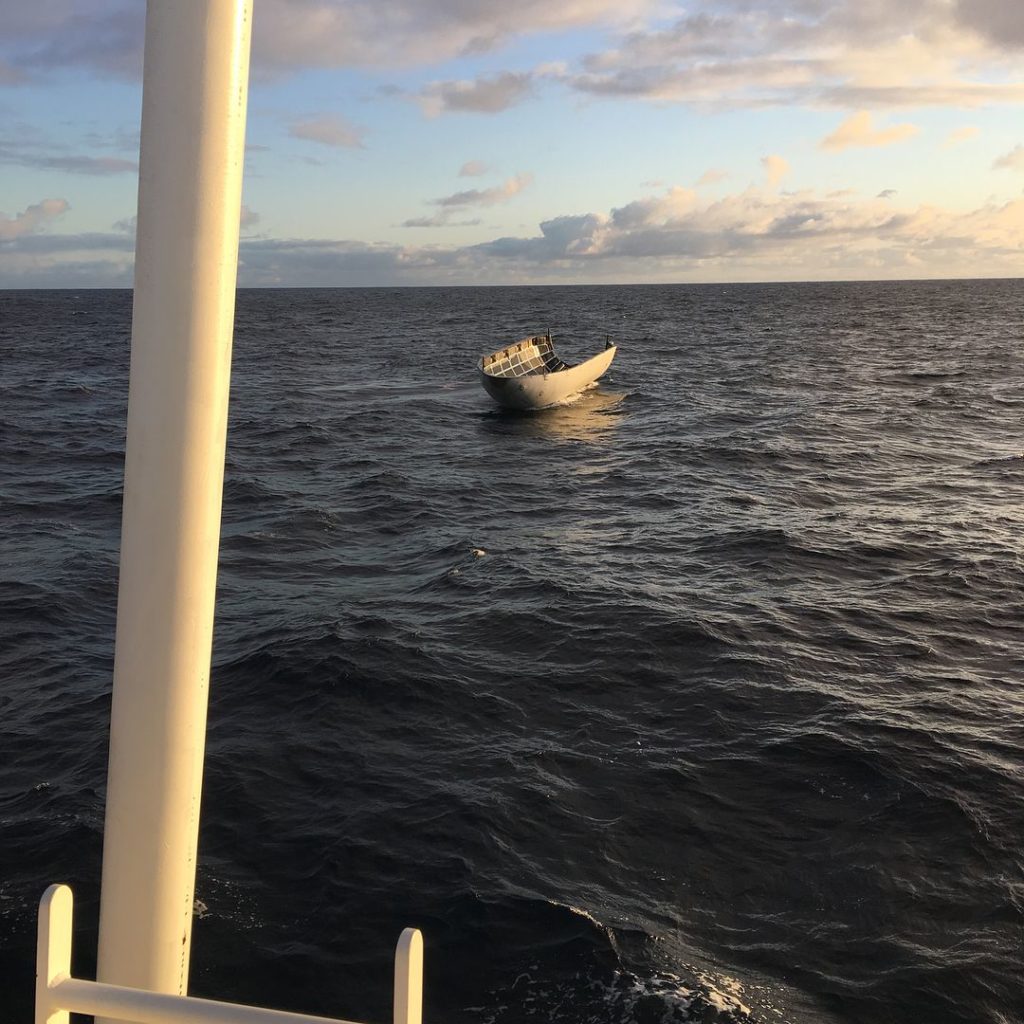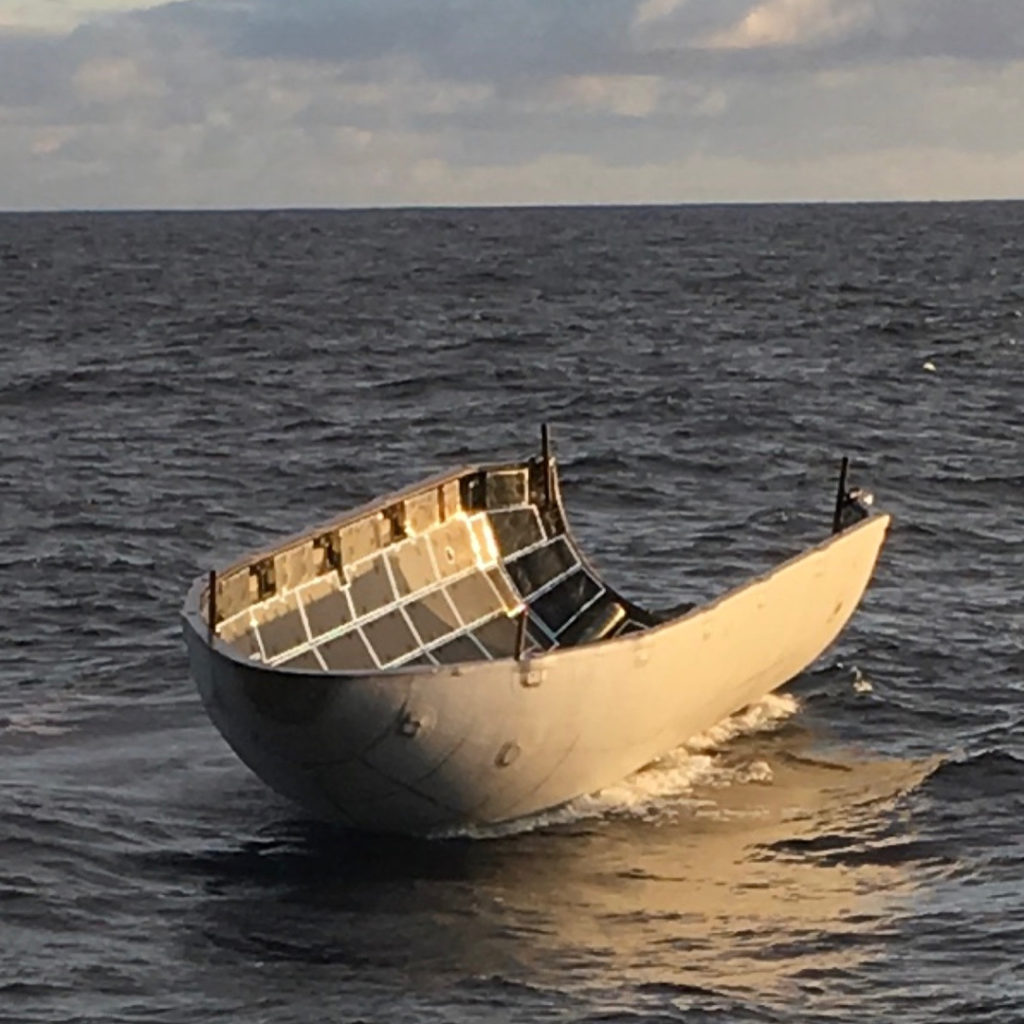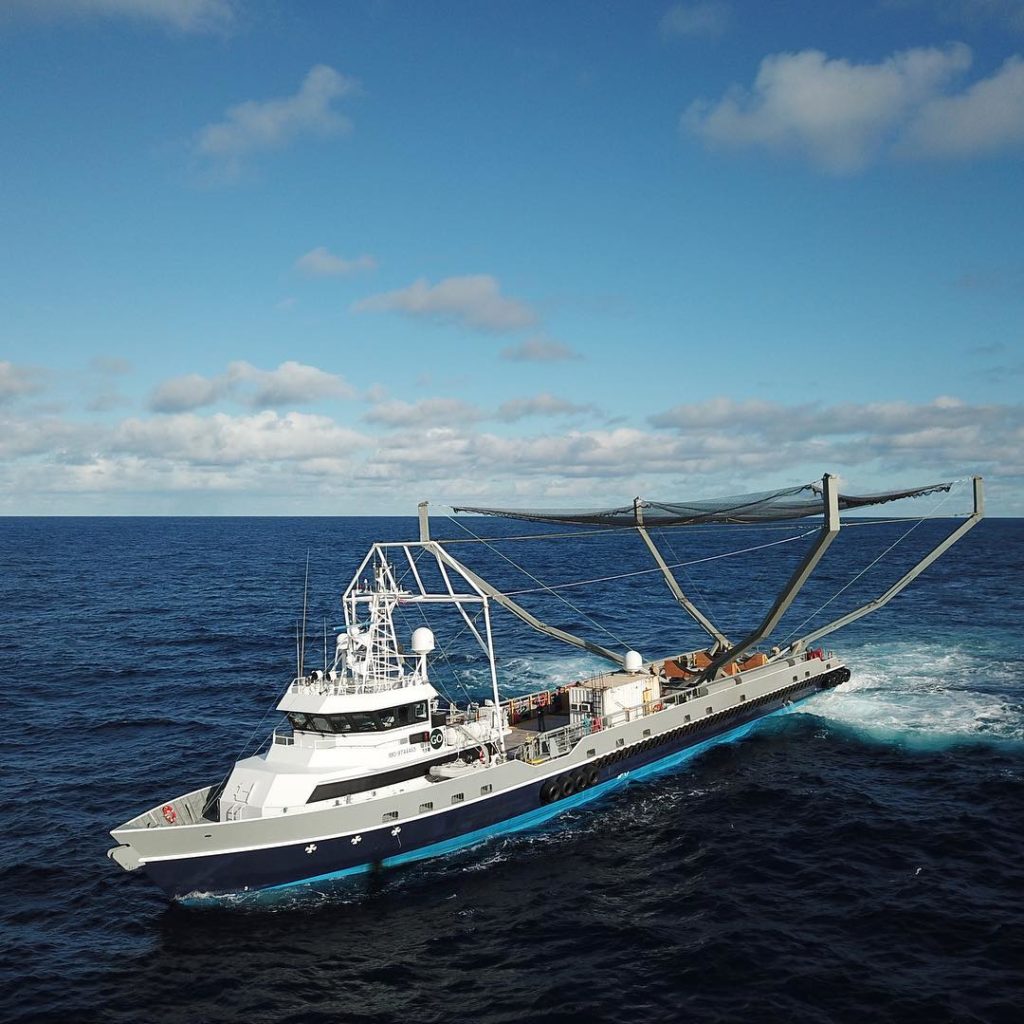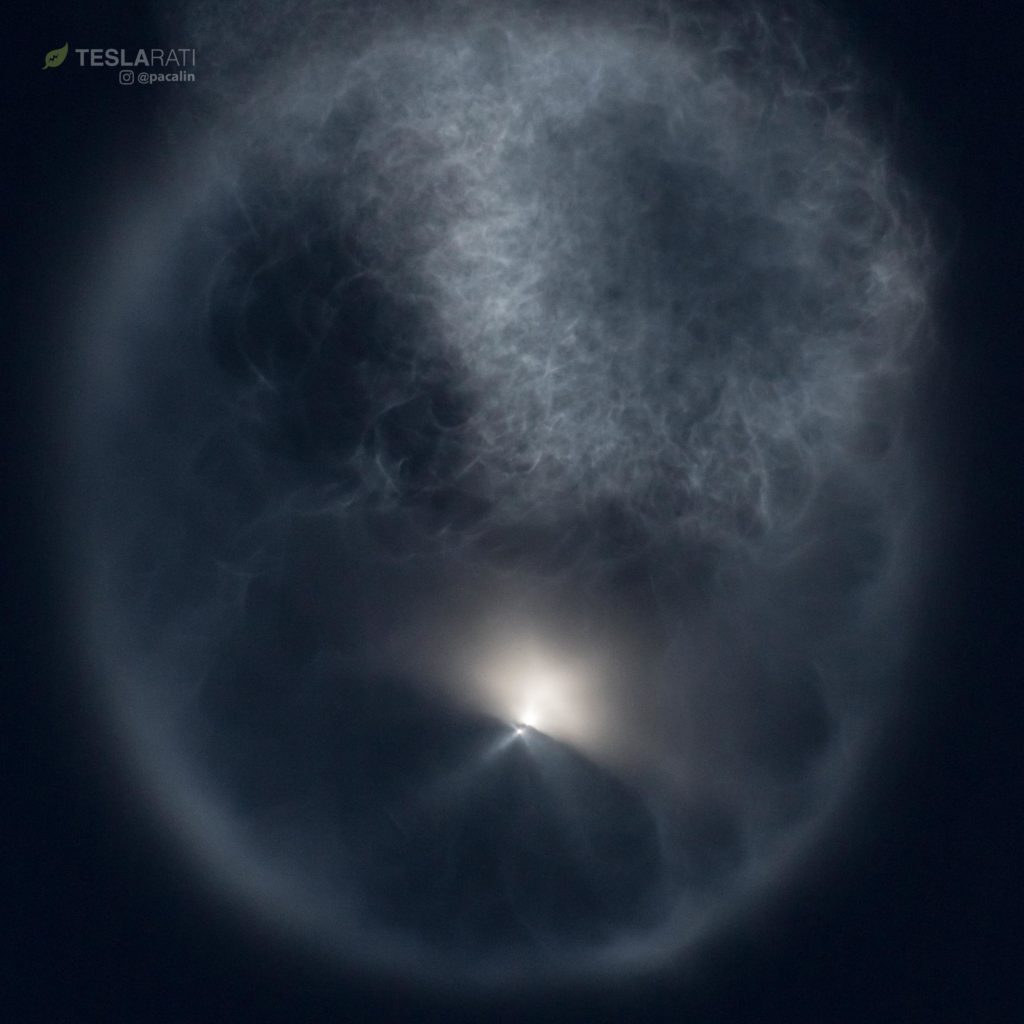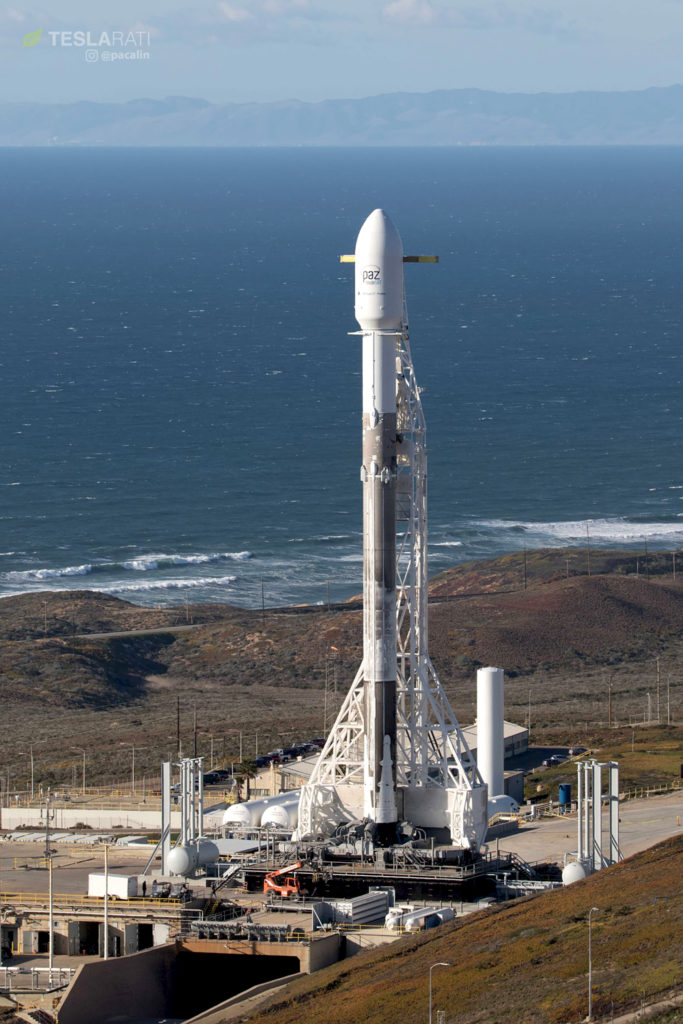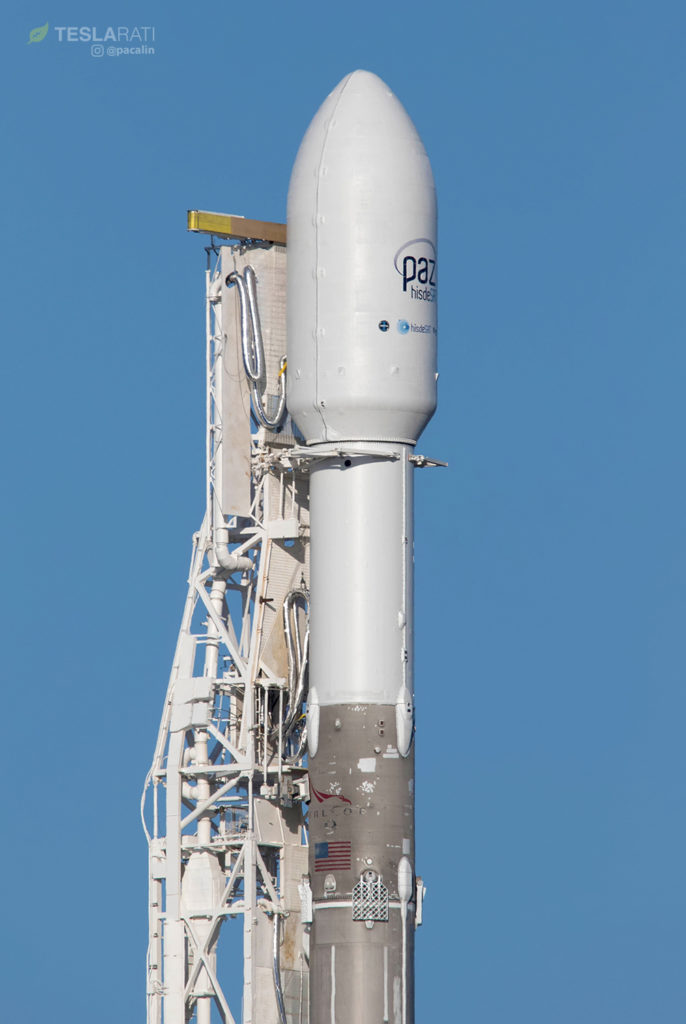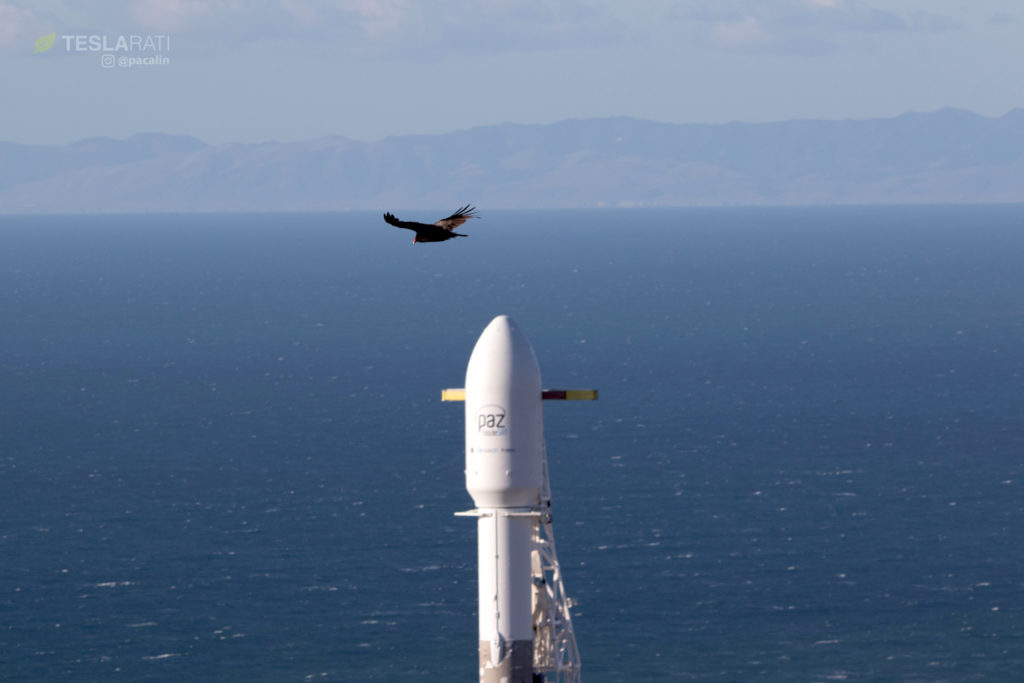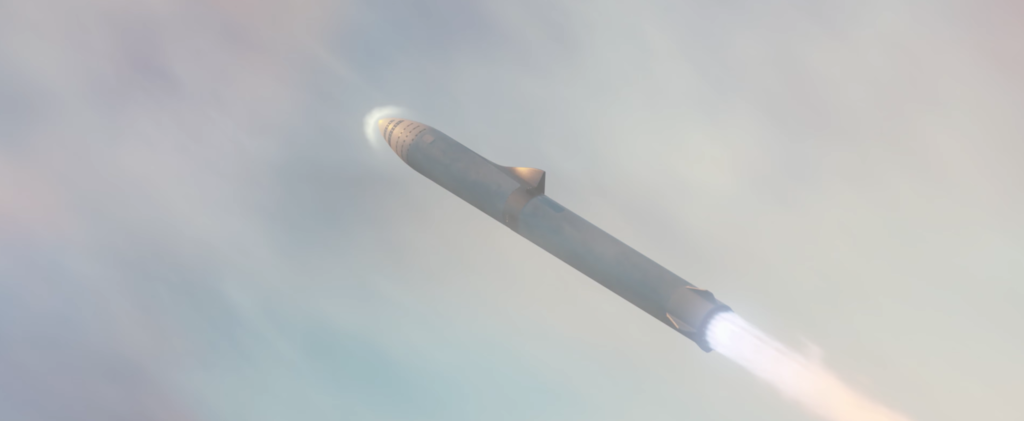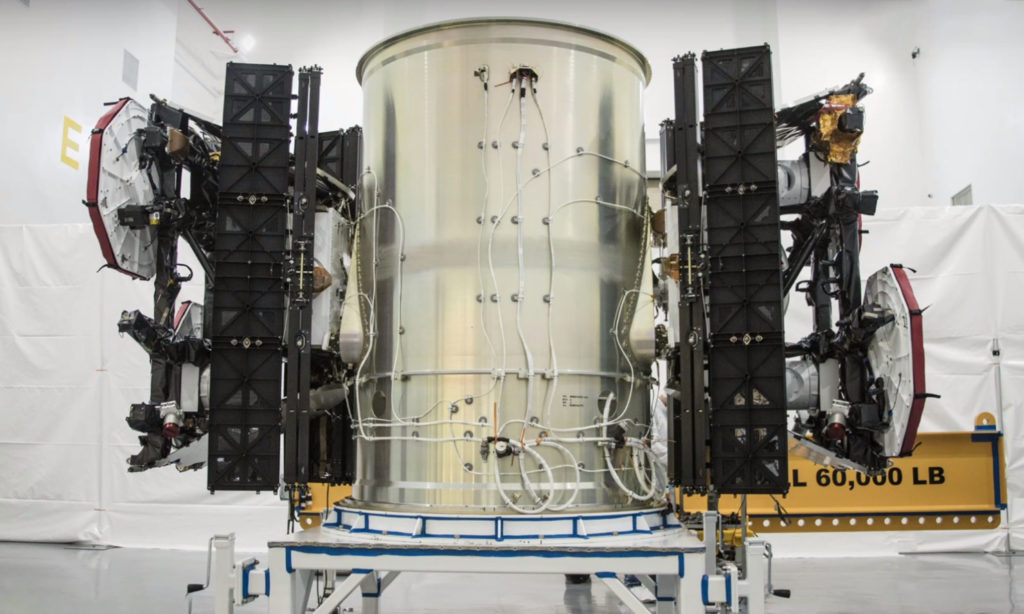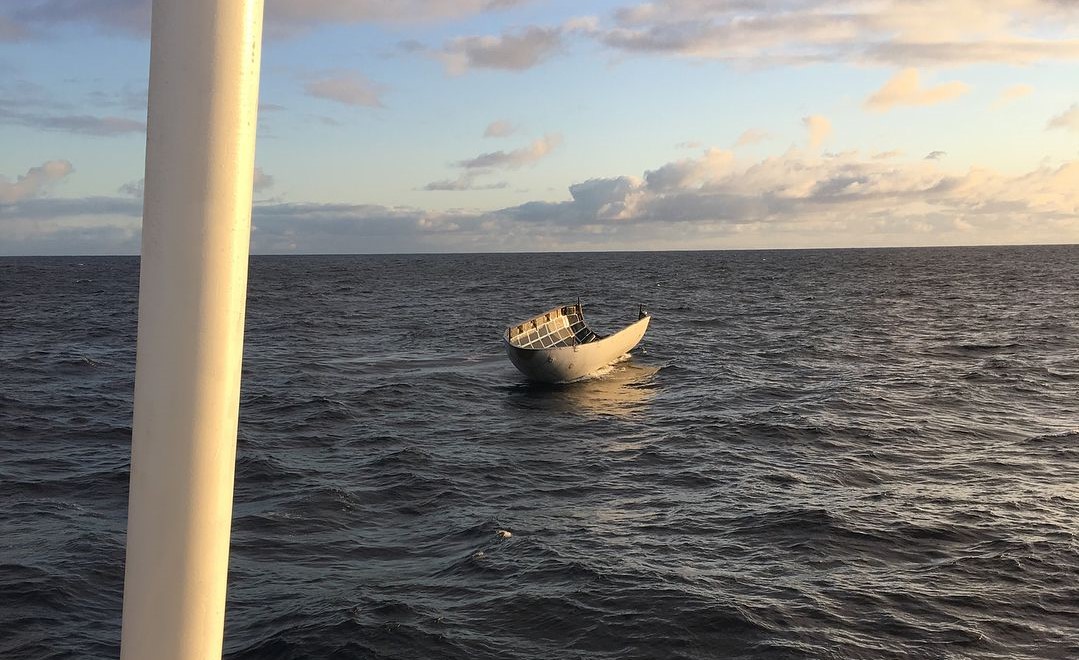

News
SpaceX recovers fairing intact for the first time, Starlink communicating back to Earth
With the launch of PAZ and two of their own Starlink demo satellites, SpaceX has completed its fourth successful launch of 2018, and continued an aggressive series of reusability-focused flight-tests.
Amazingly, the company managed to successfully recover a fairing intact for the first time ever, an absolutely crucial step towards ramping the Falcon family’s launch cadence and reusability. According to CEO Elon Musk, SpaceX’s fairing recovery vessel Mr. Steven missed the fairing by a few hundred meters, meaning that the fairing gently landed in the Pacific Ocean, rather than Mr. Steven’s now-famous fairing recovery net. This is quite possibly the first time in aerospace history that an orbital rocket’s payload fairing has been recovered intact, and the fairing in question looks very much intact.
- It may look unassuming, but that fairing half could swallow an entire school bus and by all means should not be in one piece. (Fairing from PAZ, photo by Elon Musk)
- A closeup of the landed fairing. This particularly fairing is the first flight of Fairing 2.0, a recent upgrade. (Elon Musk)
- Mr Steven is currently undergoing arm surgery (upgrades) at SpaceX’s future BFR factory lot, known as Berth 240. (Elon Musk)
As mentioned by Musk, that massive piece of hardware had to survive reentry into Earth’s atmosphere at no less than Mach 8, considerably more than two times faster than the famous SR-71 Blackbird spy plane. While the fairing’s parafoil appears to have sunk after being quickly detached, careful observers will note three vertical bars at its three corners, almost certainly the points where that parafoil attaches to them and allows it to gently float down to the ocean surface. While not nearly as consequential as SpaceX’s growing expertise with Falcon booster recovery and reuse, each fairing – made largely of carbon fiber composites – takes a huge amount of time and effort to complete, and cost upwards of $3 million each ($6m for both halves). In this sense, SpaceX has managed to recover a pallet of cash, as Musk humorously likened the effort fairing reuse to in 2017.
Given just how good the fairing’s condition appears to be, as well as the calm sea states, it’s very likely that SpaceX will try to pick up the landed fairing with a crane, although that would require a different vessel – Mr. Steven has no crane! Teslarati’s Pauline Acalin will undoubtedly be checking out the Port of San Pedro once Mr. Steven has returned to shore, in hopes of capturing the first-ever photos of a recovered orbital rocket fairing.
Remote camera has been retrieved, wet with morning dew…and WITH images! Awesome launch by SpaceX. @teslarati #SpaceX #Paz #Starlink pic.twitter.com/tDTXxZErN4
— Pauline Acalin (@w00ki33) February 22, 2018

Falcon 9 roars into the dark California sky with PAZ and Starlink. (Pauline Acalin)
- Similar to the Iridium-4 launch that had LA screaming “ALIENS!!!”, this launch gave an incredible show to California. (Pauline Acalin)
- SpaceX intends to launch three Falcon 9s from all three of its pads in just seven days. Pictured here their VAFB pad in California. (Pauline Acalin)
- SpaceX’s first Starlink prototypes launched in late February aboard a flight-proven Falcon 9 booster. (Pauline Acalin)
- Tragically, the pictured bird is not a falcon, but a vulture. (Pauline Acalin)
Starlink hopes tempered despite apparent success
While only mentioned a few times during the webcast, the Falcon 9 that launched earlier today was also carrying additional co-passengers – two SpaceX demonstration satellites, in this case. Confirmed to have successfully deployed and begun communicating with SpaceX ground control, this is another huge accomplishment for SpaceX and marks their first-ever steps into dedicated satellite manufacturing and operation. Despite the significance of this event, SpaceX was keen to lower expectations for the satellite internet network, named Starlink. The following statement was provided during the webcast:
“Even if these satellites work as planned, we still have considerable technical work ahead of us to design and deploy a low Earth orbit satellite constellation. If successful, [this system] would provide people in low to moderate population densities around the world with affordable, high-speed internet access, including many that have never had internet access before.”
https://www.instagram.com/p/BfgTyTzgYVm/
For all intents and purposes, this appears to be a significant departure from previous statements given about Starlink by the rocket company. The explicit mention of “low and moderate” population densities being the only focus of service contrasts heavily with a general sense that Starlink was intended from the outset to provide universal internet around the globe to anyone who could afford the service. This certainly serves as a confirmation that there are major technological hurdles that will need to be overcome for Starlink to become the universal internet many have come to hope for from SpaceX – it would appear that it will be quite difficult to serve high-density populations with SpaceX’s current choice of technologies for their constellation.
Still, the demand is undeniably there. Even readers of Teslarati expressed an immediate desire to ditch their cable companies and ISPs, both in the US and abroad. If SpaceX can make it happen, they will have hordes of eager ISP-hating internet users desperate for any alternatives, and your author is proudly among them. The badly served aside, it sounds like SpaceX may be pivoting towards Starlink as a method of connecting the underserved – mainly those in rural or undeveloped areas. Even in the US, this is a major problem for those that do not live near large cities, and US ISPs are exceptionally anti-consumer in these situations – often times charging obscene costs for cable installation or outright refusing to provide coverage. Starlink could be a boon for those individuals in the US and elsewhere, especially where a simple lack of infrastructure is the cause. Much of Africa suffers from this, although mobile networks have become a backbone for a relatively unique pattern of mobile phone usage.
- .While SpaceX’s own visualizations are gorgeous and thrilling in their own rights, Romax’s interpretation adds an unparalleled level of shock and awe. (SpaceX)
- SpaceX’s first two Starlink prototype satellites are pictured here before their inaugural Feb. 2018 launch, showing off a utilitarian design. (SpaceX)
Here’s to hoping that SpaceX manages to once again rise to an exceptional technological challenge. As with all R&D efforts, the company’s satellite effort would be helped immensely with additional funds, and thankfully Falcon 9 Block 5 is very nearly ready to fly its first missions. This highly reusable iteration of the rocket could enable SpaceX to fly dozens of missions with a single Falcon 9 booster, and would thus enable unprecedented profit margins for a launch company, at least in the interim. Eventually, SpaceX is bound to bring down its prices for the customer, but the first need to recoup their reusability and Falcon Heavy investments, while also ensuring a sound business plan to support the development of their BFR and BFS vehicles that may one day enable the colonization of space. Starlink may be another beneficiary of those profits, and could itself one day act as a source of reliable funding for SpaceX’s interplanetary endeavors.
Teslarati – Instagram – Twitter
Tom Cross – Twitter
Pauline Acalin – Twitter
Eric Ralph – Twitter
News
Tesla begins Robotaxi certification push in Arizona: report
Tesla seems serious about expanding its Robotaxi service to several states in the coming months.

Tesla has initiated discussions with Arizona transportation regulators to certify its driverless Robotaxi service in the state, as per a recent report from Bloomberg News. The move follows Tesla’s launch of its Robotaxi pilot program in Austin, Texas, as well as CEO Elon Musk’s recent comments about the service’s expansion in the Bay Area.
The Arizona Department of Transportation confirmed to Bloomberg that Tesla has reached out to begin the certification process for autonomous ride-sharing operations in the state. While details remain limited, the outreach suggests that Tesla is serious about expanding its driverless Robotaxi service to several territories in the coming months.
The Arizona development comes as Tesla prepares to expand its service area in Austin this weekend, as per CEO Elon Musk in a post on X. Musk also stated that Tesla is targeting the San Francisco Bay Area as its next major market, with a potential launch “in a month or two,” pending regulatory approvals.
Tesla first launched its autonomous ride-hailing program on June 22 in Austin with a small fleet of Model Y vehicles, accompanied by a Tesla employee in the passenger seat to monitor safety. While still classified as a test, Musk has said the program will expand to about 1,000 vehicles in the coming months. Tesla will later upgrade its Robotaxi fleet with the Cyercab, a two-seater that is designed without a steering wheel.
Sightings of Cybercab castings around the Giga Texas complex suggests that Tesla may be ramping the initial trial production of the self-driving two-seater. Tesla, for its part, has noted in the past that volume production of the Cybercab is expected to start sometime next year.
In California, Tesla has already applied for a transportation charter-party carrier permit from the state’s Public Utilities Commission. The company is reportedly taking a phased approach to operating in California, with the Robotaxi service starting with pre-arranged rides for employees in vehicles with safety drivers.
News
Tesla sets November 6 date for 2025 Annual Shareholder Meeting
The automaker announced the date on Thursday in a Form 8-K.

Tesla has scheduled its 2025 annual shareholder meeting for November 6, addressing investor concerns that the company was nearing a legal deadline to hold the event.
The automaker announced the date on Thursday in a Form 8-K submitted to the United States Securities and Exchange Commission (SEC). The company also listed a new proposal submission deadline of July 31 for items to be included in the proxy statement.
Tesla’s announcement followed calls from a group of 27 shareholders, including the leaders of large public pension funds, which urged Tesla’s board to formally set the meeting date, as noted in a report from The Wall Street Journal.
The group noted that under Texas law, where Tesla is now incorporated, companies must hold annual meetings within 13 months of the last one if requested by shareholders. Tesla’s previous annual shareholder meeting was held on June 13, 2024, which placed the July 13 deadline in focus.
Tesla originally stated in its 2024 annual report that it would file its proxy statement by the end of April. However, an amended filing on April 30 indicated that the Board of Directors had not yet finalized a meeting date, at least at the time.
The April filing also confirmed that Tesla’s board had formed a special committee to evaluate certain matters related to CEO Elon Musk’s compensation plan. Musk’s CEO performance award remains at the center of a lengthy legal dispute in Delaware, Tesla’s former state of incorporation.
Due to the aftermath of Musk’s legal dispute about his compensation plan in Delaware, he has not been paid for his work at Tesla for several years. Musk, for his part, has noted that he is more concerned about his voting stake in Tesla than his actual salary.
At last year’s annual meeting, TSLA shareholders voted to reapprove Elon Musk’s compensation plan and ratified Tesla’s decision to relocate its legal domicile from Delaware to Texas.
Elon Musk
Grok coming to Tesla vehicles next week “at the latest:” Elon Musk
Grok’s rollout to Tesla vehicles is expected to begin next week at the latest.

Elon Musk announced on Thursday that Grok, the large language model developed by his startup xAI, will soon be available in Tesla vehicles. Grok’s rollout to Tesla vehicles is expected to begin next week at the latest, further deepening the ties between the two Elon Musk-led companies.
Tesla–xAI synergy
Musk confirmed the news on X shortly after livestreaming the release of Grok 4, xAI’s latest large language model. “Grok is coming to Tesla vehicles very soon. Next week at the latest,” Musk wrote in a post on social media platform X.
During the livestream, Musk and several members of the xAI team highlighted several upgrades to Grok 4’s voice capabilities and performance metrics, positioning the LLM as competitive with top-tier models from OpenAI and Google.
The in-vehicle integration of Grok marks a new chapter in Tesla’s AI development. While Tesla has long relied on in-house systems for autonomous driving and energy optimization, Grok’s integration would introduce conversational AI directly into its vehicles’ user experience. This integration could potentially improve customer interaction inside Tesla vehicles.
xAI and Tesla’s collaborative footprint
Grok’s upcoming rollout to Tesla vehicles adds to a growing business relationship between Tesla and xAI. Earlier this year, Tesla disclosed that it generated $198.3 million in revenue from commercial, consulting, and support agreements with xAI, as noted in a report from Bloomberg News. A large portion of that amount, however, came from the sale of Megapack energy storage systems to the artificial intelligence startup.
In July 2023, Musk polled X users about whether Tesla should invest $5 billion in xAI. While no formal investment has been made so far, 68% of poll participants voted yes, and Musk has since stated that the idea would be discussed with Tesla’s board.
-

 Elon Musk1 week ago
Elon Musk1 week agoTesla investors will be shocked by Jim Cramer’s latest assessment
-

 Elon Musk3 days ago
Elon Musk3 days agoElon Musk confirms Grok 4 launch on July 9 with livestream event
-

 Elon Musk13 hours ago
Elon Musk13 hours agoxAI launches Grok 4 with new $300/month SuperGrok Heavy subscription
-

 News7 days ago
News7 days agoTesla Model 3 ranks as the safest new car in Europe for 2025, per Euro NCAP tests
-

 Elon Musk2 weeks ago
Elon Musk2 weeks agoA Tesla just delivered itself to a customer autonomously, Elon Musk confirms
-

 Elon Musk1 week ago
Elon Musk1 week agoxAI’s Memphis data center receives air permit despite community criticism
-

 Elon Musk2 weeks ago
Elon Musk2 weeks agoTesla’s Omead Afshar, known as Elon Musk’s right-hand man, leaves company: reports
-

 News2 weeks ago
News2 weeks agoXiaomi CEO congratulates Tesla on first FSD delivery: “We have to continue learning!”

